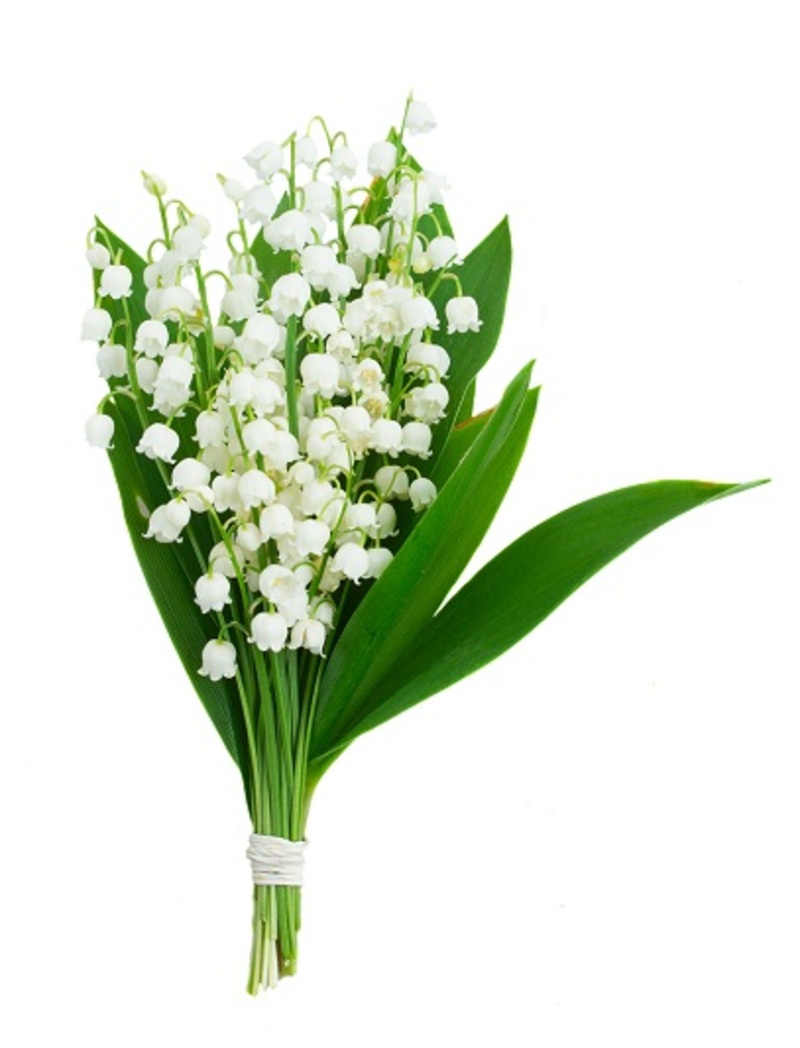Three Handy Techniques for Floral Preservation
Posted on 21/08/2025
Three Handy Techniques for Floral Preservation
Flowers hold a cherished place in our hearts. Whether commemorating a special occasion, recalling memories, or simply appreciating their beauty, we often wish to make fleeting moments last longer. Fortunately, floral preservation techniques allow us to extend the life of blooms well beyond their natural span. In this guide, we'll delve into three handy methods for preserving flowers, each providing a unique way to protect and display your favorite blossoms for years to come.

Why Is Flower Preservation Important?
Preserving flowers offers numerous benefits. Not only do these methods prolong the aesthetic beauty of your blooms, but they also help you capture emotions and memories associated with special events like weddings, anniversaries, or graduations. Furthermore, floral preservation serves as a sustainable way to reduce waste and enjoy eco-friendly decor.
- Sentimental Value: Many people want to keep flowers as a remembrance of milestones and milestones.
- Sustainable Decor: Preserved flowers offer a green alternative to artificial arrangements.
- Creative Expression: Keepsake floral crafts like wreaths, shadow boxes, and potpourri add a personal touch to your living space.
Technique #1: Air Drying Flowers
What Is Air Drying and When to Use It?
Air drying is a classic flower preservation technique that involves simply hanging blooms upside down and allowing nature to work its magic. This method is perfect for hearty flowers such as roses, lavender, statice, and baby's breath. Air drying preserves much of the flower's original shape while drying out the petals and stems.
Step-by-Step Guide to Air Drying Flowers
- Choose the Right Blooms: Select flowers just as they begin to open. Fully mature or wilting blooms may lose petals during the drying process.
- Remove Leaves: Strip excess foliage from the stems to prevent mold or rot during drying.
- Bundle and Secure: Gather flowers into small bunches and tie the stems with string, rubber bands, or twist ties.
- Hang Upside Down: Hang the bunches in a well-ventilated, dry, and dark place (like an attic or closet). This prevents sunlight from fading the petals.
- Wait Patiently: Drying typically takes two to three weeks. Once the blooms feel crisp, they are ready for display or crafting.
Tips and Best Practices
- Avoid humidity: Moisture can cause molds to grow on your drying flowers. Ensure your drying area remains dry.
- Control for pests: Keep an eye out for insects that might find the blooms inviting.
- Preserve color: Dry flowers in the dark to help maintain their vibrant hues.
Air drying flowers is one of the most handy floral preservation methods due to its simplicity and reliability.
Technique #2: Pressing Flowers
What Is Flower Pressing?
Pressing flowers involves flattening blooms between the pages of a book or between boards, allowing them to dry and preserve in a flat form. This method is perfect for smaller, delicate flowers and leaves like pansies, daisies, violets, and ferns. Pressed flowers are ideal for use in crafts such as bookmarks, cards, scrapbooking, and framed wall art.
How to Press Flowers: A Step-by-Step Approach
- Pick Fresh Flowers: As with drying, harvest your flowers at peak bloom for the best results.
- Prepare the Materials: You'll need absorbent materials such as parchment paper, coffee filters, or blotting paper, as well as a heavy book or a dedicated flower press.
- Arrange the Flowers: Place the blooms between two sheets of your absorbent material, flattening them to your desired arrangement.
- Apply Pressure: Close the book or press, adding additional weight if needed.
- Dry and Wait: Leave the flowers in the press for one to four weeks, checking occasionally and replacing absorbent paper if required.
- Display: Once completely dry, remove the pressed flowers carefully and display them as you like.
Useful Tips for Successful Flower Pressing
- Variety: Choose blooms and foliage of varying shapes, sizes, and colors for a more interesting and artistic result.
- Moisture control: Ensure flowers are dry before pressing; excess water can cause browning or mold.
- Avoid overlapping: Overlapping flowers can stick together and distort shapes during pressing.
Floral pressing is perhaps the most celebrated among all handy techniques for flower preservation, ideal for crafters and sentimentalists alike.
Insider tip: Some people use a microwave flower press for quicker results, but traditional pressing often yields the most consistent outcomes.
Technique #3: Using Silica Gel for Flower Preservation
Why Choose Silica Gel?
If you want to preserve flowers while retaining their three-dimensional shape and vibrant colors, silica gel is your best bet. This method works wonders for more delicate and intricate blooms such as peonies, orchids, and dahlias. Silica gel acts as a desiccant, absorbing moisture quickly and gently.
Step-by-Step Instructions for Silica Gel Drying
- Gather Materials: You'll need a container with a tight-fitting lid and sufficient silica gel crystals (widely available at craft stores or online).
- Prepare the Flowers: Trim stems and remove any unwanted leaves.
- Layer the Silica Gel: Pour a layer of silica gel into the bottom of your container.
- Arrange the Flowers: Place blooms face up, then cover gently with more silica gel, ensuring all petals are supported and covered. Be gentle to avoid damaging petals.
- Seal and Wait: Secure the lid tightly and store the container in a cool, dry place for two to seven days, depending on flower size and moisture.
- Remove and Clean: Carefully excavate the flowers using a spoon or brush off excess silica gel with a soft brush.
Top Tips for Using Silica Gel
- Reusable: Silica gel can be reused multiple times. Dry it out in the oven after use for future projects.
- Color retention: This method is unmatched for keeping colors true and bold.
- Support: Use extra silica gel to prop up and support flower heads for perfect shape retention.
For many, silica gel drying is a handy flower preservation method that produces the highest-quality, lifelike results.
Caring for Your Preserved Flowers
Regardless of your chosen floral preservation technique, aftercare is crucial in ensuring your blooms last as long as possible. Proper handling and display play a significant role in their longevity.
- Avoid direct sunlight: Sunlight can bleach colors and make petals brittle.
- Limit humidity: Moisture causes preserved petals and stems to weaken or mold.
- Dust gently: Use a soft brush or canned air to whisk away dust without damaging delicate surfaces.
- Display with care: Protected settings like glass domes or shadow boxes can guard flowers from damage and dust.
With proper care, your preserved flowers can remain beautiful and cherished for years to come.
Creative Ways to Display Preserved Flowers
Once you've mastered one or more handy techniques for flower preservation, the possibilities for creative display are endless. Consider these innovative ideas:
- Shadow Boxes: Create a 3D memory box including souvenirs & notes alongside your preserved blossom.
- Wall Art: Arrange pressed or dried blooms behind glass in ornate frames for a botanical-inspired gallery.
- Jewelry: Encapsulate tiny pressed flowers in resin to create one-of-a-kind necklaces or earrings.
- Wedding Keepsakes: Transform your wedding bouquet into a permanent memento using your chosen flower preservation technique.
- Decorative Wreaths: Assemble air-dried flowers into rustic wreaths for year-round decor.
Preserving your favorite flowers isn't just about extending their lifespan--it's an opportunity to express your creativity and keep your sweetest memories close.

Frequently Asked Questions About Flower Preservation Techniques
Can you preserve all types of flowers?
Most flowers can be preserved, but some retain their beauty better than others. Thick-petaled, low-moisture flowers (like roses, lavender, and statice) yield the best results. Succulents and fleshy blooms tend to rot or distort during drying processes, but can sometimes be dried with silica gel or special desiccants.
How long do preserved flowers last?
With proper care, air-dried and silica gel-preserved flowers can stay beautiful for one to three years or even longer. Pressed flowers, being more fragile and exposed, may fade over time but often last for many years if kept away from light and humidity.
What's the best way to preserve wedding flowers?
Many brides choose silica gel or professional freeze-drying for bouquets. Air drying and pressing individual blooms are also excellent and budget-friendly options for do-it-yourself keepsakes.
Can I use hairspray to preserve flowers?
A mist of unscented hairspray can be applied to dried flowers to help reinforce fragile petals and stems. However, it's not a substitute for proper drying or pressing.
Conclusion: Choosing the Best Flower Preservation Technique for You
Understanding the three handy flower preservation techniques--air drying, pressing, and silica gel--offers you the creative control to protect and celebrate your favorite blooms. Whether you're saving a sentimental bouquet, crafting botanical art, or seeking sustainable decor, these methods for floral preservation ensure your flowers continue to bring joy long after their natural prime.
- Air Drying: Ideal for rustic arrangements and bouquets; simple, effective, and cost-free.
- Pressing: Best for creative projects and paper crafts; retains intricate details in a flat form.
- Silica Gel Drying: Delivers professional results with preserved color and shape for display-worthy keepsakes.
By mastering these floral preservation methods, you transform ephemeral blossoms into enduring treasures. Start experimenting with these techniques today--and let the beauty of your flowers live on!
Latest Posts
Enhance your tulip lore with these 7 surprising insights
Easy-Care Office Plants: Greenery for Busy Schedules
Three Handy Techniques for Floral Preservation





